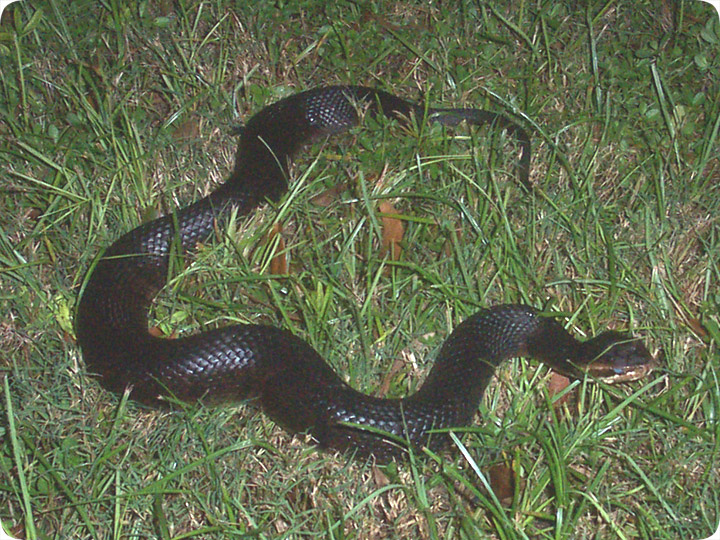-
info@aaanimalcontrol.com
Call us for help in your town
Humane Wildlife Education
Water Moccasin

In short, this snake is an aquatic snake. I took the above photo near a swamp. Unlike most pit vipers, it does not possess rattles. It does give birth to live young, and rarely grows above five feet. The above snake is about four feet long. It does have a very powerful cytoxic venom, and can deliver a very nasty bite, that can be lethal from a large enough Water Mocassin, but if not lethal, will certainly result in horrible pain and destruction of tissue at the bite site.
I'm going to take time out now, since it's on my mind, to talk about a "snake expert" who came to my elementry school when I was nine years old. He described all kinds of snakes. He said that if a rattlesnake bites a person, the bite site will turn black and blue. He said this is because the snake penetrates with its fangs, and then when it's withdrawing, the fangs tear through the flesh, ripping apart the blood vessels, causing the black and blue. I believed this man at the time, and his explanation rang true in my head for most of my childhood. I later learned that such bites are lightning-quick, and the fangs are far too delicate to permit ripping of human flesh, but in fact don't penetrate very deeply, nor for more than a split second. The black and blue, of course, is because that snake happened to inject a type of venom that DISSOLVES TISSUE. So that could explain it, Mr. "Snake Expert", who my dumb school brought to misinform us dumb kids.
Do it yourself: Visit my How To Get Rid of Snakes page for tips and advice.
Get professional help: Visit my Nationwide Pro Directory of wildlife removal experts.
For more wildlife stories, click my Wildlife Blog or click my below banner to hire a local trapper.

You can also catch snakes with a special trap, which you can order by clicking this banner:





















